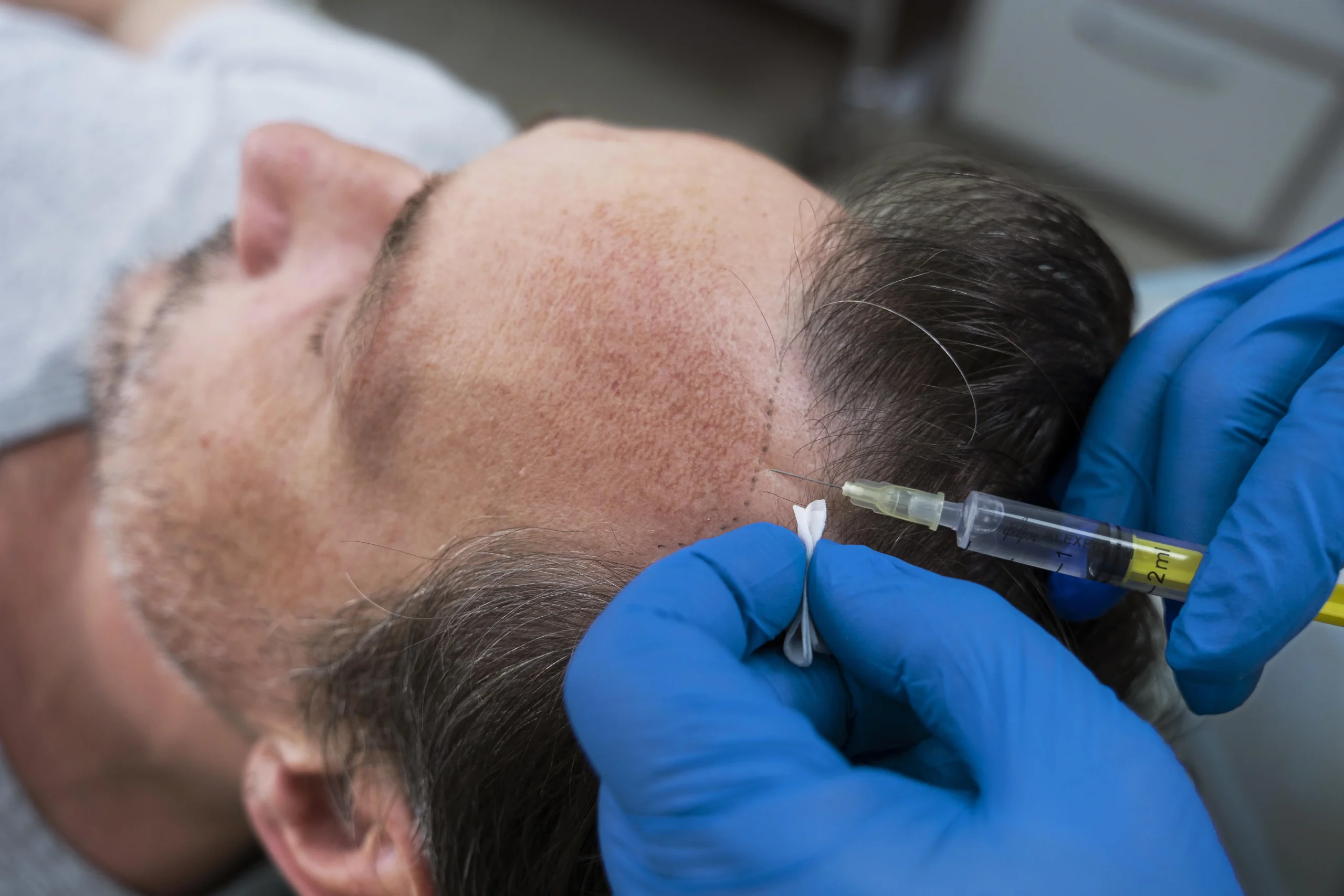
Stem cell hair transplantation is an advanced, regenerative approach to hair restoration that combines traditional hair transplant techniques—such as FUE (Follicular Unit Extraction) or DHI (Direct Hair Implantation)—with stem cell-enriched therapy. The goal is to enhance the survival, growth, and quality of transplanted hair follicles, while also stimulating existing hair to become thicker and healthier.
This method does not involve cloning hair or creating new follicles. Instead, it supports the natural healing and growth environment using stem cell-derived solutions or regenerative tissue harvested from the patient.
The core transplant is done using standard methods like FUE or DHI, where healthy follicles are harvested from the donor area and implanted into thinning regions.
During or immediately after implantation, stem cell-derived serums, growth factors, or autologous micro-fat grafts enriched with regenerative cells are applied or injected into the scalp.
These biologically active substances stimulate healing, improve blood circulation, and enhance the integration and growth of both transplanted and existing follicles.
Stem cell support helps reduce inflammation, increase graft survival, and accelerate recovery for improved long-term outcomes.
This approach is especially useful for patients with weakened donor areas, thin scalp tissue, or those who want to optimize every aspect of their hair transplant journey.
Stem cell-supported hair transplantation is ideal for:
Your surgeon will determine eligibility based on your scalp condition, hair density, and medical history
Recovery is like a standard hair transplant, but healing may be faster due to the regenerative support. Mild redness, swelling, or scabbing typically subsides within a week. Transplanted hairs enter a shedding phase within the first month, followed by visible regrowth beginning around month three. Full results are typically achieved between nine and twelve months.
Stem cell treatments may be repeated after several months to maintain or enhance outcomes.
No. It does not generate new follicles. Instead, it supports the function and survival of existing and transplanted hair through regeneration and improved scalp conditions.
Yes. While PRP is also regenerative, stem cell therapy may involve more concentrated growth factors or adipose-derived tissue, offering a broader biological effect.
No. Both the transplant and regenerative injections are done under local anesthesia, making the experience comfortable.
Yes. In some cases, stem cell therapy can be offered as a standalone treatment for early-stage hair loss or to strengthen existing hair.
It may come from your own fat tissue, blood-derived sources, or lab-processed serums, depending on the method your clinic uses.
Patients receiving stem cell support often report faster recovery, less shedding, and denser regrowth. However, final outcomes depend on individual biology, graft quality, and aftercare.
Yes. When performed by qualified professionals using sterile techniques and approved regenerative materials, stem cell-supported hair transplantation is safe and effective.

Medipol University Hospital, being the justifiably proud of Medipol Education and Health Group in Turkey and in the world, resulting in this spirit, is a health complex having JCI standards accepting patients from all over the world.
TEM Avrupa otoyolu göztepe çıkışı no:1, 34214 Bağcılar/İstanbul